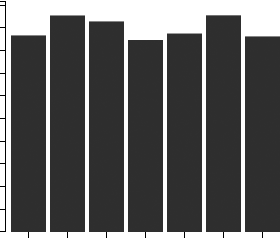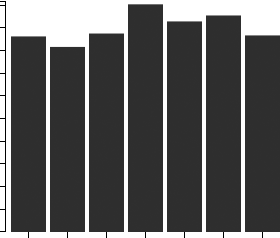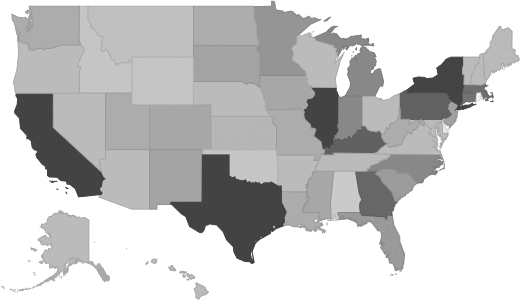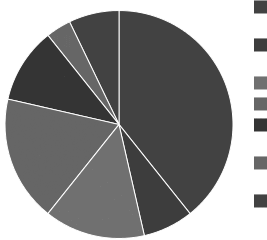Textile & Fabric Finishing Mills Industry - Market Research Report
Industry Overview
This industry comprises (1) establishments primarily engaged in finishing textiles, fabrics, and apparel and (2) establishments of converters who buy fabric goods in the grey, have them finished on contract, and sell at wholesale. Finishing operations include: bleaching, dyeing, printing (e.g., roller, screen, flock, plisse), stonewashing, and other mechanical finishing, such as preshrinking, shrinking, sponging, calendering, mercerizing, and napping; as well as cleaning, scouring, and the preparation of natural fibers and raw stock.
Source: U.S. Census BureauMarket Size and Industry Forecast
This research report analyzes the market size and trends in the Textile and Fabric Finishing Mills industry. It shows overall market size from 2020 to the present, and predicts industry growth through 2030. Revenues data include both public and private companies.
| Historical | Forecasted |
|---|
| 2020 | 2021 | 2022 | 2023 | 2024 | 2025 | 2026 | 2027 | 2028 | 2029 | 2030 |
|---|
| Market Size (Total Revenue) | Included in Report |
| % Growth Rate |
| Number of Companies |
| Total Employees |
| Average Revenue per Company |
| Average Employees per Company |
Source: U.S. government financial dataIndustry Revenue ($ Billions)

Industry Forecast ($ Billions)

Advanced econometric models forecast five years of industry growth based on short- and long-term trend analysis. Market size includes revenue generated from all products and services sold within the industry.
Geographic Breakdown by U.S. State
Market size by state reveals local opportunity through the number of companies located in the region. Each state's growth rate is affected by regional economic conditions. Data by state can be used to pinpoint profitable and nonprofitable locations for Textile & Fabric Finishing Mills companies in the United States.
Textile & Fabric Finishing Mills Revenue by State

Distribution by Company Size
| Company Size | All Industries | Textile & Fabric Finishing Mills |
|---|
| Small Business (< 5 Employees) | Included |
| Small Business (5 - 20) |
| Midsized Business (20 - 100) |
| Large Business (100 - 500) |
| Enterprise (> 500) |
Textile & Fabric Finishing Mills Industry Income Statement (Average Financial Metrics)
Financial statement analysis determines averages for the following industry forces:
- Cost of goods sold
- Compensation of officers
- Salaries and wages
- Employee benefit programs
- Rent paid
- Advertising and marketing budgets
The report includes a traditional income statement from an "average" company (both public and private companies are included).
| Industry Average | Percent of Sales |
|---|
| Total Revenue | Included |
| Operating Revenue |
| Cost of Goods Sold (COGS) |
| Gross Profit |
| Operating Expenses |
| Operating Income |
| Non-Operating Income |
| Earnings Before Interest and Taxes (EBIT) |
| Interest Expense |
| Earnings Before Taxes |
| Income Tax |
| Net Profit |
Average Income Statement

Cost of Goods Sold
Salaries, Wages, and Benefits
Rent
Advertising
Depreciation and Amortization
Officer Compensation
Net Income
Financial Ratio Analysis
Financial ratios allow a company's performance to be compared against that of its peers.
| Financial Ratio | Industry Average |
|---|
| Profitability Ratios | Included |
| Profit Margin |
| ROE |
| ROA |
| Liquidity Ratios |
| Current Ratio |
| Quick Ratio |
| Activity Ratios |
| Average Collection Period |
| Asset Turnover Ratio |
| Receivables Turnover Ratio |
| Inventory Conversion Ratio |
Products and Services Mix
Product lines and services in the Textile & Fabric Finishing Mills industry accounting for the largest revenue sources.
| Product Description | Description | Revenue
($ Millions) |
|---|
Broadwoven fabric finishing mills | Included |
Broadwoven fabrics, cotton, finished in finishing mills |
Broadwoven fab., cotton, twill weave (exc. pile), finish. mills |
Broadwoven fabrics, cotton (exc. plain/twill/pile), finish. mills |
Broadwoven fabrics, cotton, pile, finished in finishing mills |
Broadwoven fab., cotton, plain weave (exc. pile), finish. mills |
Broadwoven fabrics, cotton, finished in finishing mills, nsk |
Broadwoven fabrics, cotton, job or commission finishing |
Broadwoven fabrics, cotton, print cloth, job/commission finishing |
Broadwoven fabrics, manmade fiber and silk, finishing mills |
Salary information for employees working in the Textile & Fabric Finishing Mills industry.
| Title | Percent of Workforce | Bottom Quartile | Average (Median) Salary | Upper Quartile |
|---|
| Management Occupations | 6% | Included |
| Chief Executives | 0% |
| General and Operations Managers | 2% |
| Office and Administrative Support Occupations | 14% |
| Production Occupations | 59% |
| Supervisors of Production Workers | 5% |
| First-Line Supervisors of Production and Operating Workers | 5% |
| First-Line Supervisors of Production and Operating Workers | 5% |
| Textile, Apparel, and Furnishings Workers | 32% |
| Textile Bleaching and Dyeing Machine Operators and Tenders | 21% |
| Other Production Occupations | 18% |
| Transportation and Material Moving Occupations | 6% |
Government Contracts
The federal government spent an annual total of
$28,639,659 on the textile & fabric finishing mills industry. It has awarded 387 contracts to 98 companies, with an average value of $292,241 per company.
Top Companies in Textile & Fabric Finishing Mills and Adjacent Industries
| Company | Address | Revenue
($ Millions) |
|---|
Included |



